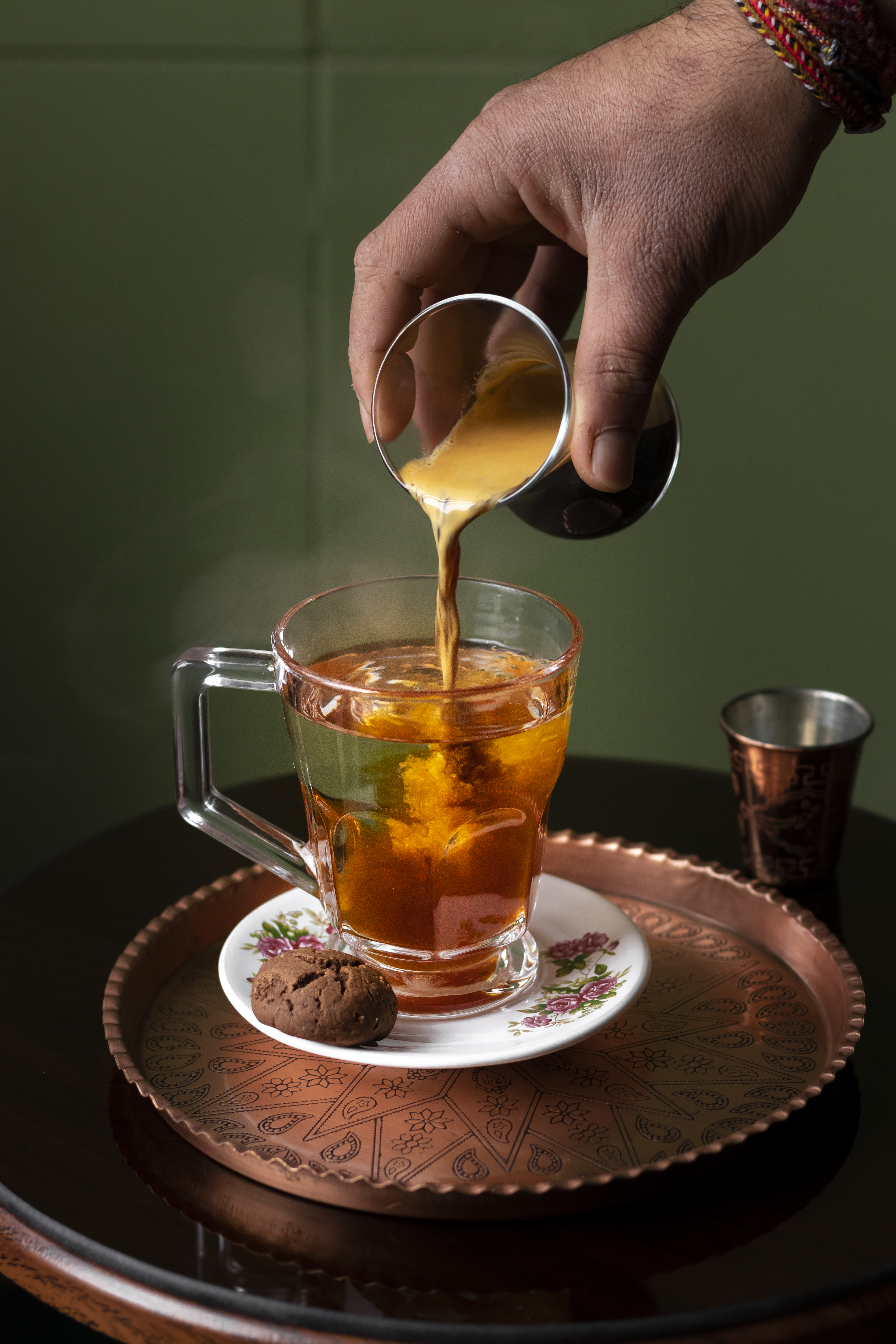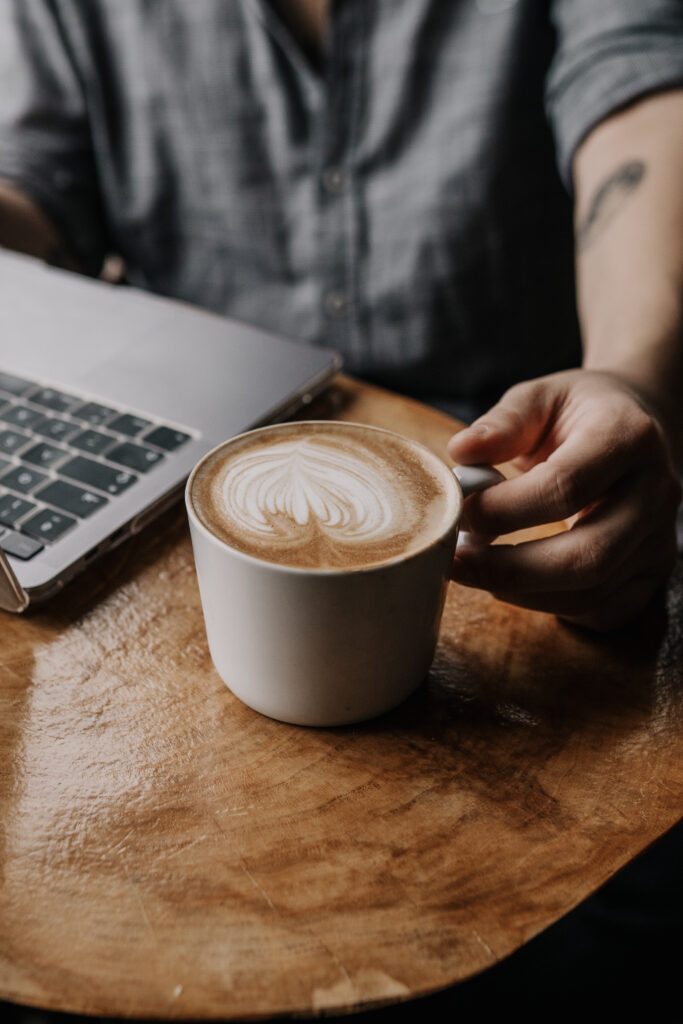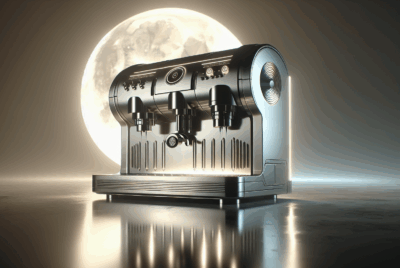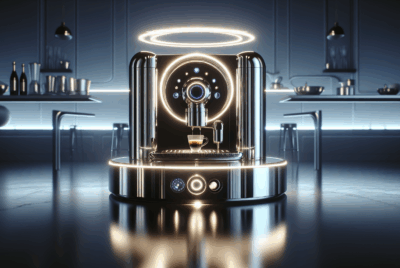Is Espresso Stronger Than Regular Coffee
As an Amazon Associate, I earn from qualifying purchases, at no additional cost to you. Disclaimer
Hi there, I’m glad you’ve stumbled upon my article titled “Is espresso stronger than regular coffee“. In this thought-provoking piece, I’ll be sharing essential insights and interesting facts about the potency of espresso in comparison to regular coffee. Challenging common misconceptions and unveiling hidden truths, we’ll explore the fascinating world of caffeine, its origins, and its effects on our daily lives. So join in, as we brew an interesting discussion on this intriguing topic. After reading, you might just have the answer to whether espresso truly is stronger than regular coffee.

Understanding the Differences Between Espresso and Regular Coffee
If you’re a coffee enthusiast like me, you probably appreciate how wonderfully diverse the world of coffee can be. Today, we will explore differences between espresso and regular coffee to help you make more informed decisions every time you brew or order your cup of Joe.
The brewing process for espresso vs regular coffee
The distinct flavors we enjoy in espresso and regular coffee result from their unique brewing processes. To extract espresso, water is pressed forcefully through finely ground beans. The high pressure extracts the coffee’s intense flavor within seconds, creating a thick, concentrated brew and a rich crema on top. Regular coffee, on the other hand, is brewed by gently adding hot water to coarsely ground beans, allowing time for flavors to infuse more slowly, resulting in a lighter, smoother taste.
Types of beans used for espresso and regular coffee
Espresso is typically made from dark-roasted beans, while regular coffee may use either light, medium, or dark-roasted beans. Despite the common misconception, it’s the roast, not the bean type that dictates whether it’s for espresso or regular coffee.
Differences in taste and texture
Espresso has a robust, bold flavor and thick, syrupy consistency due to its concentrated extraction process, while regular coffee tastes lighter and more subtle. The brew methods thus make the difference between an intense, strong shot of espresso and a mellow, easy-to-drink cup of regular coffee.
What is Espresso?
Let’s dive deeper into the world of espresso, which, much like regular coffee, has a fascinating history and unique craftsmanship.
Origin and history of espresso
Espresso was born in Italy during the late 19th century. The aim was to find a quicker way to brew coffee not only for speedier service but also to highlight the coffee’s intense flavor and aroma. The term ‘espresso’ comes from Italian meaning ‘express’ or ‘fast.’
How is espresso made?
Espresso is made by forcing pressurized, near-boiling water through finely ground coffee beans packed into a ‘puck.’ The process requires a machine capable of delivering water at high pressure, typically nine bars. The result is a concentrated coffee with a thick crema on top.
Characteristics of a good espresso
A high-quality espresso boasts a balance of acidity, bitterness, and subtle sweetness with a hint of floral or fruity notes, depending on the bean type. It should be dense, smooth, and aromatic with a lingering aftertaste. A thick, consistent crema is also a sign of well-brewed espresso.

What is Regular Coffee?
Now let’s shift gears and explore the creation and characteristics of a regular cup of coffee.
Origin and history of regular coffee
The history of regular coffee is as rich as its taste. Originating in the Ethiopian region, coffee was first consumed as a food before evolving into the brewed beverage we cherish today. The traditional drip coffee brewing method became popular in the United States during the 20th century.
How is regular coffee made?
Regular coffee can be brewed using a variety of techniques, such as the pour-over, French press, or automatic drip. However, all methods involve pouring hot water over coarsely ground coffee beans. The water extracts flavors from the beans over a few minutes before it gets filtered.
Characteristics of a good cup of regular coffee
A satisfying cup of regular coffee offers a harmony of flavors—ranging from fruity to nutty, a pleasant aroma, and a specific level of acidity. The taste is typically milder than espresso, but it can vary widely depending on the bean type, grind, and brewing method.
The Caffeine Content in Espresso and Regular Coffee
Coffee lovers often question which packs a stronger caffeine punch—espresso or regular coffee? Let’s clear up the confusion.
Amount of caffeine in espresso
A single shot of espresso contains about 63 milligrams of caffeine. However, because the serving size of espresso is much smaller, it has a higher concentration of caffeine per fluid ounce than regular coffee.
Amount of caffeine in regular coffee
An 8-ounce cup of regular coffee contains roughly 95 milligrams of caffeine, which may seem higher than a shot of espresso. Yet, per fluid ounce, regular coffee has less caffeine concentration.
Factors affecting the caffeine content
Several factors affect the caffeine content, including the bean type (Robusta beans have more caffeine than Arabica), roast level (lighter roasts contain more caffeine), grind size, and brewing time. So, while we have general guidelines, the actual caffeine content in your coffee can vary.

Is Espresso Stronger Than Regular Coffee?
When people ask if espresso is stronger than regular coffee, what do they mean? Let’s explore the concept of ‘strength’ in coffee.
Interpreting ‘strength’ in coffee
Strength in coffee generally refers to the intensity of taste or the coffee’s caffeine content. Espresso usually takes the crown in both aspects due to its condensed brewing process.
Comparing the caffeine content
Though espresso has a higher concentration of caffeine per ounce, a standard serving of regular coffee generally delivers more caffeine because it is served in larger volumes.
Differences in flavor intensity
In terms of flavor intensity, espresso indeed packs a punch. The high-pressure extraction generates a full-bodied flavor, while regular coffee offers a comparatively milder taste.
The Health Effects of Espresso and Regular Coffee
Both espresso and regular coffee offer various health benefits, though they come with potential risks when consumed in excess.
Health benefits of espresso
Espresso can boost physical performance, improve mental alertness, and potentially protect against certain diseases like diabetes and Parkinson’s, thanks to its antioxidants.
Health benefits of regular coffee
Regular coffee shares many of the same benefits. It can improve energy levels, aid fat burning, lower the risk of stroke, and potentially help you live longer.
Potential risks and side effects
Despite these benefits, both espresso and regular coffee can lead to insomnia, digestive problems, and elevated heart rate and blood pressure if overconsumed. Moderation is key, folks!

Choosing Between Espresso and Regular Coffee
The choice between espresso and regular coffee primarily boils down to your taste preference, caffeine tolerance, and health considerations.
Considering the caffeine content
If you seek a stronger caffeine kick in a small dose, espresso is your pick. But if you want more overall caffeine in a larger drink, go with regular coffee.
Factor in the taste preference
If you enjoy robust, intense flavors, espresso will cater to your palate. But if you prefer a smoother, lighter taste, then regular coffee should be your daily brew.
Understanding your personal health considerations
Consider your caffeine sensitivity and health concerns when opting between the two. If you have a medical condition worsened by caffeine, you might want to choose based on caffeine content per serving.
How to Properly Brew Espresso and Regular Coffee
Knowing how to brew espresso and regular coffee correctly can significantly enhance your coffee experience.
Steps to brewing a great espresso
Ensure your machine is clean and heated. Grind fresh beans to a fine texture just before brewing. Tamp the grounds evenly in the portafilter, then pull your shot for 20-30 seconds, aiming for a honey-like flow.
Steps to brewing a great regular coffee
For regular coffee, grind your beans to a consistency of sea salt. Heat your water to around 200°F (93°C). Pour the water evenly over the grounds and let it steep before filtering.
Common mistakes in brewing espresso and regular coffee
Overheating, under-extraction, using stale beans, wrong grind size, and uneven water distribution are common pitfalls in coffee brewing.

Common Misconceptions About Espresso and Regular Coffee
Finally, let’s dispel some common misconceptions about espresso and regular coffee.
Misconception about espresso’s caffeine content
One common fallacy is that espresso contains more caffeine than regular coffee. As we’ve discussed, it has more caffeine per ounce, but due to it’s serving size, regular coffee usually delivers more caffeine per cup.
Misconception about coffee’s health effects
Coffee being harmful is another myth. While consuming in moderation, both espresso and regular coffee have numerous health benefits, including boosting physical and mental performance.
Clarifying the ‘strength’ of coffee
Lastly, strong coffee doesn’t always mean high caffeine. The ‘strength’ of coffee is often a measure of its flavor intensity, which is influenced by the brewing method and bean roast level.
Conclusion: Is Espresso Stronger than Regular Coffee?
As we wrap up, let’s revisit our initial question: Is espresso stronger than regular coffee?
Recap: differences between espresso and regular coffee
Both espresso and regular coffee have unique characteristics, primarily determined by their brewing processes. Espresso gives a robust, concentrated flavor, while regular coffee provides a lighter, smoother taste.
In terms of caffeine content
Per ounce, espresso has more caffeine. However, in a standard serving, regular coffee often contains more caffeine due to it’s larger volume.
Based on the flavor profile and texture
While espresso offers an intense flavor profile and richer texture, regular coffee is mellower and smoother.
Personal preference and health considerations
Choosing between the two ultimately depends on your personal preference and any health considerations. If you crave a robust and aromatic shot, espresso is your go-to. But if you lean towards a mellow, comforting cup, regular coffee will hit the spot.
So, to answer the question: both espresso and regular coffee have their strengths, depending on what you value in your cup. Enjoy exploring the wonderful world of coffee that awaits you. Each type has a unique appeal, making our coffee journeys exciting and diverse. So go ahead, experiment, savor, and enjoy your perfect brew.




